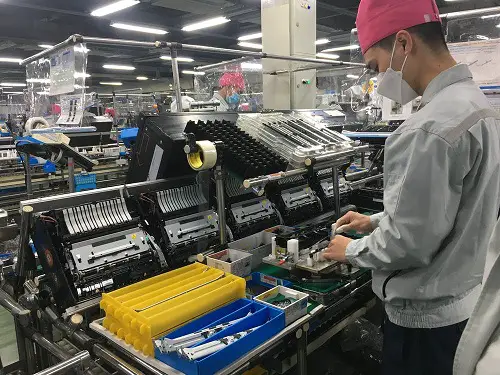According to a new report in Bloomberg citing national statistics and analyses, Russia has managed to keep its economy running through boosting investment in its domestic production infrastructure, and focusing on creating new supply routes which would bypass nations participating in the Western sanctions regime.
The report showed capital expenditures were up by 6% last year, while many analysts had been expecting it would drop by up to 20% after the war in Ukraine began.
According to a recent report from the Bank of Russia, in 2022 most Russian businesses either increased their investment, or maintained it at the same level as the previous year. This caused output to only drop by 2%, which was far less than economists had predicted would be the case after Western sanctions went into effect.
The sanctions have cut Russia off from many imports, forcing Russian companies to either boost spending to replace the cheap Western equipment and software they could no longer import, or invest in establishing new supply routes to secure what they needed from other suppliers who were not taking part in the sanctions regime.
According to the Federal Statistics Service (Rosstat), of the five most capital intensive sectors of the Russian economy, four increased their spending on investment, including mining, real estate transportation, and science and technology.
As an example, one of the largest steelmakers in the country, Severstal, facing foreign sanctions, pivoted from projects subject to the sanctions, into information technology for the metal industry. Some of the country’s biggest banks also pivoted from investing to replacing foreign software for businesses after it was deactivated remotely by the manufacturers for Russian clients. Some lenders were reported last month to be about to begin issuing stickers to replace foreign contactless payment services, such as Apple Pay and Google Pay, which have both been deactivated in Russia.
According to a study by real-estate firm NF Group, commercial real estate investments in Russia hit a historic high last year of 487.2 billion rubles ($6.8 billion), 21% above 2021’s levels.
NF Group said, “The volume of investments was record-breaking with a minimal share of foreign capital. Russian investors are becoming owners of the vast majority of premium properties in various segments and this trend is likely to continue until the outgoing companies sell all their assets.”
Spending by gas and oil producers was also increased as they sought out new transport infrastructure or reoriented their exports from the West to other buyers who were not constrained by Western sanctions.
Tatiana Orlova of Oxford Economics said to Bloomberg, “This trend should support fixed investment in the years to come.”
State financing also aided businesses, through government grants and programs designed to aid importers find alternative sources for their products. This was among the biggest sources of capital expenditures, at about 17.8%.
Sergey Yanchukov, Chief of Mangazeya group, a company mainly involved in gold mining, construction and development, said to Bloomberg, “Difficult times will pass, while projects will remain – they are long-term, so we aren’t stopping anything.” He added companies were viewing the expenditures as investments for the future, which were “necessary to move forward.”

